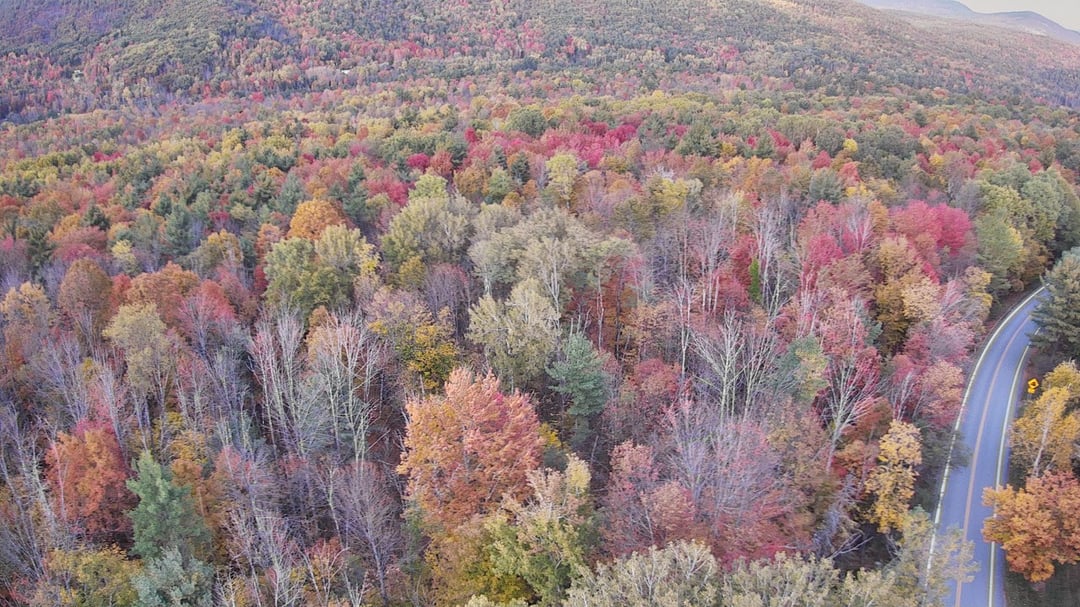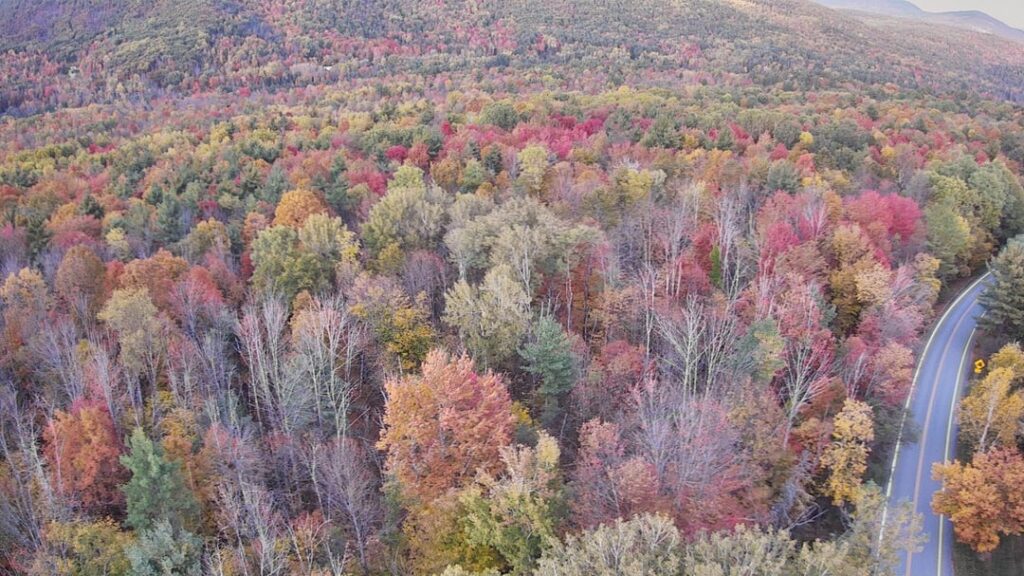


This parcel is located in the eastern Adirondacks. I recently bought it and suspect that it was previously logged and farmland before that (lots of stone walls). Regay, it seems pretty young. I'm curious the best way to manage it (or if I should just leave it alone)
Sorry if this is more of a forestry question.
Thanks fellow tree lovers!
by schismtomynism


24 Comments
I’m a commercial grower and not a forester but my estimate would be 20-30 years old
younger than the mountains
Check historical satellite photos
Let me begin by saying I’m more familiar with southern forests, and only as an enthusiast. I’m a certified arborist but I have no experience managing forests.
That said, there are indicators for both young and old forests. Young forests will have pioneer species, those that move in to unused spaces quickly. Here, it’s pine. Pine will move in to abandoned farmland and really take over. It can be quite dense early on but competition for resources and space will eventually thin it out. Pine grows relatively quickly as well. By the time they are maturing, a wider variety of trees will have taken root.
Slower growing trees tend to dominant mature forests. Here in the south, if you see large oak trees or a beech grove, you can be relatively sure that space has not been disturbed for a long time.
Logging operations typically leave behind relics. Stumps cut by a chainsaw look very different from natural stumps, though they all degrade over time. You might find tires where there is no road, gas or oil cans, or metal drums. Beer cans. That stuff is more permanent but eventually gets buried or rusts away.
Aerial imagery can be helpful, especially if you can get old photos. Speaking of old, ask the neighbors or the previous owner or the oldest person working in city hall. They might be able to tell you about its history.
Wish I could be more helpful. I’ll be following this post so that we can learn together.
Good luck!
The type of management depends on your objectives. Having seen several types of ADK old growth forests, the pictures don’t present as one. Looks like some isolated 12” to 18” DBH trees, but mostly saplings and pole class
all land in the northeast have been clear cut at least twice. and harvested pretty much nonstop since the 1700s. Is that harvest a load of firewood or 50 truck loads? Who can say
Anywhere from 25 to 150 years old is my guess. Hunt down Cornell extension foresters for advice.
I’m not a tree person, but was trained as a nature interpreter. I see secondary growth suggesting a young forest. Even the big trees aren’t very big, suggesting that they were left 80-100 years ago when the land was logged. Nice forest, but very little in way of mature trees.
Nice woods. This looks similar to some sites I work in that I know to be 25-30 years old. I would say it’s been about 30 years since it was last cleared. Those bigger maples and pines in the last pic were left uncut. Of the younger cohort of trees, the largest would have been seedlings when the stand was cut (advance regeneration), so they’re a bit older than 30 years old. Those multi-stemmed maples could be the same age, despite being so much bigger, since they are stump sprouts.
Management wise: you could cut some diseased beech that are competing with more desirable species. Google crop tree release for details.
There are excellent resources in your area to help with decision making and management planning. That includes the 480a program with NYSDEC (usually they help set up a forest management plan, but you may be able to set up one more biodiversity or “older forest” focused)
Also UVM has a very good forest outreach/extension program that would have good resources.
The smooth, relatively flat ground in your photos are another indication of a younger forest with relatively recent disturbance, possibly even agriculture. But still, nice looking woods! It will be a lot of fun exploring and caring for. Have fun with it!
I’m very much an amateur, and welcome any corrections of insight from experts.
About a decade ago I started managing a piece of Northeastern forest with no previous training, and it sounds like you have some similarities in how you’re going into it. I just wanted to help the forest thrive, and harvest some firewood responsibly. There’s a couple books I came across that were helpful in learning about forest progression and dynamics:
[https://www.northwoodscenter.org/wordpress/introduction-to-forest-ecology-and-silviculture/](https://www.northwoodscenter.org/wordpress/introduction-to-forest-ecology-and-silviculture/)
[https://northernwoodlands.org/shop/item/more-than-a-woodlot](https://northernwoodlands.org/shop/item/more-than-a-woodlot)
As for age, an easy way to start to learn the history would be to cut a few trees and count their rings. I found that due to the history of clearing in our region, trees of a given “age class” had very similar ages, like within 5 years or so, dating back to some point when the open field had stopped being mowed. You might see something different if your forest has been logged for a while, with groups of trees dating back to smaller scale canopy openings. A sampling of ages can be really informative. You’re setting out for a lot of interesting discoveries!
I’d say between 30-40 years.
There are some older red maples with older bark, and those white birch in the background are pretty large and mature. Some are even beginning to decline. That signifies your forest is maturing though!
I don’t think it’s been logged since it was turned into pasture. This looks like a relatively recently fallowed field. The older fields around me have enormous 80+ year old trees growing out of them and there’s far less open space. You’d also see stumps everywhere if it was logged recently and I don’t see many in this picture.
It will be easier to locate information with the parcel or lot number. I’m assuming you don’t want to give us all your APN, so just pull a property report. It will give you insight on all of the previous uses, including commercial harvesting.
The majority of those trees are quite young. I would co-sign the 20-30 year age for the small ones. But there are some larger trees that I’d say are 80+ years old. Potentially used to yard out the rest of the trees. Is burning part of the local practice? The understory is quite clear for “unmanaged” forestlands. I’m unfamiliar with east coast forests. Maybe this is normal for y’all
30 yrs max
The uniform size of the trees suggests it was clear then grew back, I don’t see any stumps so likely it was a field vs logging. I also see the ground is smooth which also indicates it was plowed and likely cultivated, though this could have been very long ago.
Stone walls with only big rocks are indicative of pasture, smaller rocks more likely crops.
I’d guess 20-30 years at most. It was probably field before that for a period. Check out a book called “reading the forested land scape”
It’s a safe bet that any wooded lot in New England was once logged and used for agriculture
30-50 years
3
At least thirty thousand years old.
by looking at those leaves at trees i only think of one thing which is like bob ross’s painting in 1985 the whispering stream im not saying that bob ross’s painting is bad but what im saying is like that picture of the forest gives me vibes like her painting welp i got alittle off topic there but i estimate the age of the forest would be like 1985?
10+ years
Why’d you buy it? Where’d you buy it? What does someone do with such land? I have a lot of random questions. -clueless city slicker
I kind of feel like that canopy is not matching the trees in the other pictures 🤔
Trees I’d say. You can’t see the forest for the trees. Hardwoods, softwoods. Oak, pine, popular and walnut. Hopefully not sweet-gum.
Looks like fire 15 years ago. Now, you need a tree management specialist or watch My Self Reliance. Those trees need room.